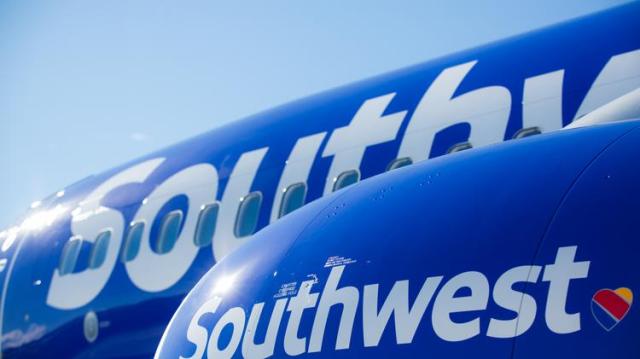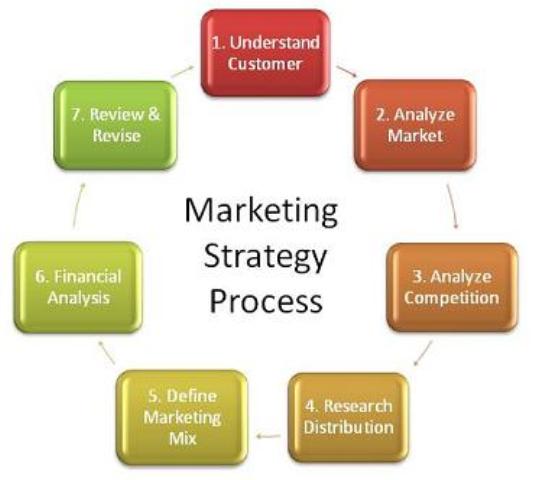anjalicutek
Anjali Khurana
<h2>Marketing Strategy of Southwest Airlines</h2>


Southwest Airlines Co. (NYSE: LUV) is an American low-cost airline and the world's largest low-cost carrier. The airline has its headquarters on the grounds of Dallas Love Field in Dallas, Texas. Southwest is the largest airline in the world by number of passengers carried per year (as of 2009).[3] Southwest maintains the fifth-largest passenger fleet of aircraft among all of the world's commercial airlines.[4] As of December 31, 2009, Southwest operates more than 3,200 flights daily.[5]
Southwest Airlines has carried more passengers than any other U.S. airline since August 2006 for combined domestic and international passengers according to the U.S. Department of Transportation's Bureau of Transportation Statistics. Southwest Airlines is one of the world’s most profitable airlines, posting a profit for the 37th consecutive year in January 2010.
Southwest's successful business model involves flying multiple short, quick trips into the secondary (more efficient and less costly) airports of major markets, and using only one aircraft type, the Boeing 737. On September 27, 2010, Southwest Airlines announced it would acquire AirTran Airways.
The nickel-and-dime pricing that runs rampant in the cash-strapped airline industry is the bane of frugal travelers and a boon for Southwest Airlines.

Southwest made the point to consumers with its recent "Freedom From Fees" campaign from GSD&M's Idea City, Austin, Texas.
The decision to go full throttle with the message came last spring as other airlines began adding extra fees with a vengeance, including American Airlines, which began charging not just for the third piece of checked luggage, but the first piece. Sure, there's revenue to be made from adding fees, but the Southwest take has been to use the luggage issue as a brand-building case, making the airline a haven for fee-weary travelers.
"It became very personal for people when it started getting into luggage," says Kevin Krone, VP-marketing, sales and distribution at Southwest. "It was instantly a way to differentiate us from the rest of the industry."
Southwest's commitment to economical flying continues to keep the carrier cruising above much of the turbulence. The airline's revenue rose 8.5% last year to $9.9 billion; for the first three quarters of 2008, revenue tracked upward 12.5%.
In an industry that's roundly reviled by customers, Southwest Airlines largely stands alone. Thanks to the extremely effective, maverick-cum-evangelistic leadership of Kelleher, Southwest has outlasted competitors big and small to become bigger than all of them combined.
Since 1971, when the company took delivery of its first Boeing 737 after waging a four-year legal battle to get off the ground, Kelleher has built Dallas-based Southwest Airlines into a responsive army of 30,000 passionate, dedicated employees. Southwest is often number one on Fortune's list of best American companies to work for. If you look at the numbers, Southwest is doing things right, customer-wise: The company does $5.7 billion per year in business. Its market capitalization of $14 billion is bigger than United's, American's and Continental's combined. It has been profitable every quarter and every year since 1973.
Kelleher relinquished his president and CEO titles in June 2001 and handed them over to two of his long-time lieutenants. He remains as chairman and will continue to serve as its chief spokesman. With a remarkable 35-year run having been successfully completed, it's fitting that we induct Herb Kelleher into our Customer Evangelism Hall of Fame.
In the class of maverick business leaders, Kelleher has several contemporary classmates: Richard Branson and Jack Welch come to mind. In the fiercely competitive airline industry, it's easy to go from savior to chump (think Frank Lorenzo). Some pioneers have been universally despised (think Robert Crandall). It's also relatively easy to go from pioneer to Chapter 11 (think TWA, Braniff Airlines, Legend Air, et al).
But since 1967, when Southwest first launched, only to fight a four-year legal battle to get its first plane off the ground, Southwest has endured while scores of competitors have been bought or gone out of business.
What are the secrets of Kelleher's evangelistic success for Southwest?
Constantly talk to customers.
Kelleher is well known for constantly flying on Southwest's planes, just to talk to customers and employees. One frequent flyer in Texas we know has sat next to Kelleher three times in the past 10 years. Each time, Kelleher asked him and others nearby how well Southwest was doing in a number of areas, looking for trends, spotting inconsistencies.
This strategy comes from a customer-focused belief: "We tell our people, 'Don't worry about profit. Think about customer service.' Profit is a by-product of customer service. It's not an end in and of itself," he told the Chief Executive Group in an interview.
In an article he penned for the Peter F. Drucker Foundation in 1997, he described the company's marketing strategy: "We market ourselves based on the personality and spirit of ourselves. That sounds like an easy claim but, in fact, it is a supremely dangerous position to stake out because if you're wrong, customers will let you know - with a vengeance. Customers are like a force of nature: You can't fool them, and you ignore them at your own peril."
Make your company extremely open.
Kelleher has never been afraid to talk about the ingredients of the company's success to magazines, college students or customers. Remarkably, there is only one book (1996's "Nuts") that documents Southwest's success. Consistently plain spoken with a self-deprecating wit, Kelleher is a consummate storyteller, according to a May 2001 Fortune magazine cover story. About the only secret Southwest keeps is where it will launch new services.
One of Kelleher's secret weapons is eschewing long-range planning. Instead, he favors an integrated, customer-focused plan that focuses on two things: what are the societal trends and where do they want Southwest to be within that society? Many people outside Southwest's executive circle are involved in this process.
Make it easy for people to like you.
Kelleher's penchant for laughter and fun is part of Southwest's culture. Prospective employees are asked how humor helped them out of a difficult situation. Prospective pilots are sometimes asked to don Southwest shorts; the ones who see the request as fun and a lark pass the interview. Kelleher once settled a legal dispute with another company over a trademarked slogan by publicly arm-wrestling the other company's CEO. Kelleher won. Kelleher is always ready to play the fool, whether it's dressing up as Elvis for Halloween or driving a Harley to a company picnic.
"Because I am unable to perform competently any meaningful function at Southwest, our employees let me be CEO. That is one among many reasons why I love the people of Southwest Airlines," Kelleher once told the National Civil Aviation Review Commission. By consistently avoiding any airs of pretense of importance, Kelleher makes it hard for people to dislike him.
"People who emphasize too strongly the fact that they're professionals usually are not very good at what they do," Kelleher told eCompany magazine. "What really adds up to professionalism is being very good at what you do in a very modest way."
Create a cause.
"I was talking at the Yale Graduate School of Business some years ago," Kelleher told the Chief Executive Group in an interview. "In the Q&A session, one of the students stood up and said, 'It seems to me you're talking more about a religion than a business.' And I said, 'If you feel that way about your business, I think that's good. That's a plus.'"
Colleen Barrett, who has assumed Kelleher's title of president, summed up one of the primary reasons for the company's success, as she told the Chief Executive Group: "Southwest is a cause, not a career."
The company's strategy of flying only the Boeing 737, avoiding the hub-and-spoke passenger system and not paying millions of dollars to be part of other airlines' computer reservation systems has been so sound and so completely integrated that it has been impossible for any other existing airline to copy it.
The evidence for the clarity of this strategy abounds: In the first half of 2001, while other airlines struggle with huge losses, strike threats and growing concern over customer dissatisfaction, Southwest continues to remain profitable (and incident-free). Since its first flight in 1971, Southwest has only had one work stoppage.
Southwest has grown almost completely organically, and Kelleher has avoided steering Southwest into non-core areas like ownership of car rental agencies and reservation systems. This strategy, favored by competitors like UAL Corp., parent of United Airlines, and AMR, parent of American Airlines, have drained the respective companies of focus and resources.
It would be unlike Kelleher and the culture he has fostered to get involved with other non-core businesses. By consistently focusing on low costs and high customer satisfaction rates, Southwest has lead all other competitors in metrics the FAA uses to measure airline performance.
Last edited by a moderator:
